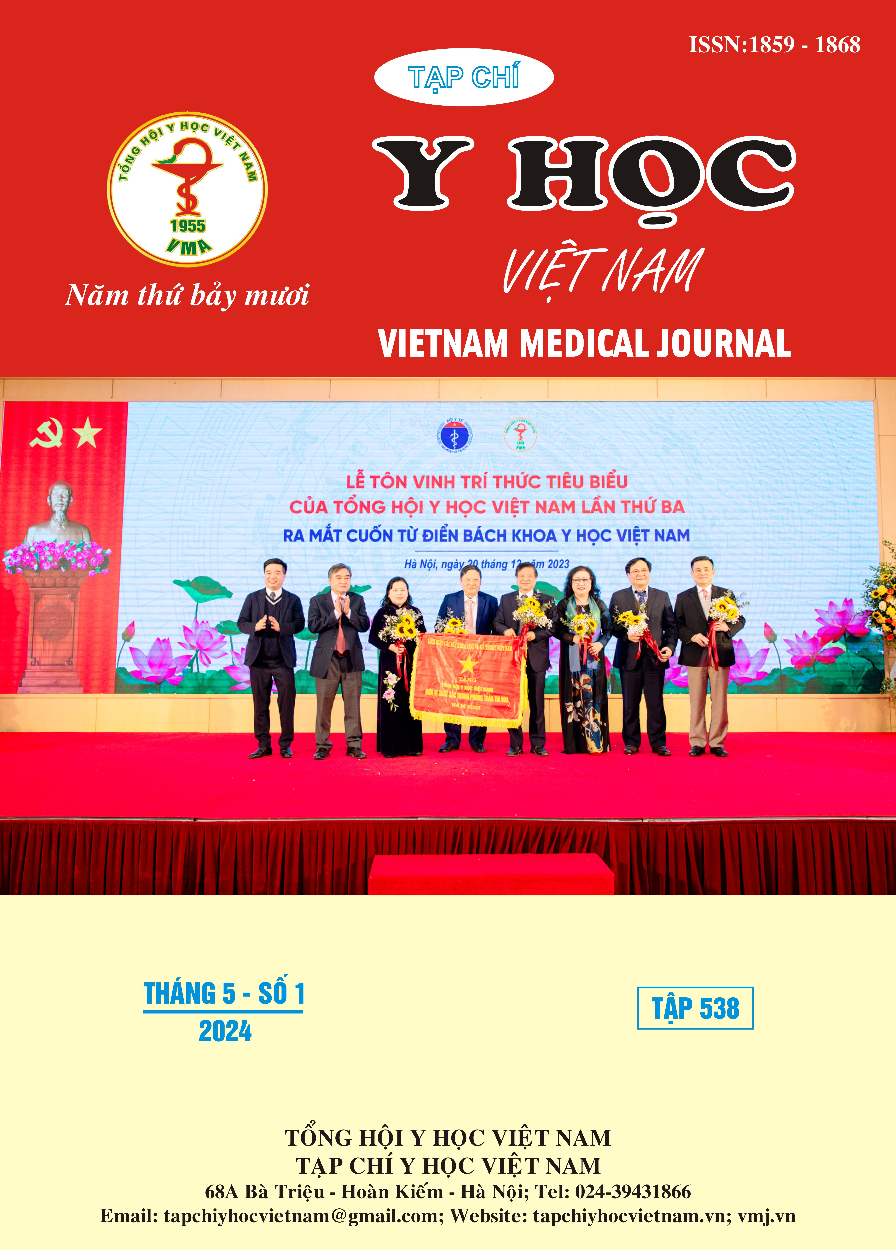TO ASSESS THE OUTCOMES OF SURGICAL INTERVENTION FOR COMBINED FRACTURE-DISLOCATION OF THE HIP USING LOCKING PLATE FIXATION AT E HOSPITAL
Main Article Content
Abstract
Introduction: This study aims to assess the outcomes of surgical intervention for combined fracture-dislocation of the hip using locking plate fixation at Hospital E from September 2020 to March 2022. Subject and Methods: A cross-sectional descriptive study and a non-randomized prospective study were conducted on 31 patients with fracture-dislocation of the hip who underwent surgical treatment with locking plate fixation at the Orthopedic Trauma Department of Hospital E during the period from September 2020 to March 2022. Results: The majority of patients (61.2%) were in the age group of 60-79 years, predominantly males (77.4%). Leisure accidents accounted for the highest proportion of injuries (64.6%), and the majority of fractures were classified as A2 type with displaced fragments (80.6%). According to the Merle-d'Aubigné-Postel scoring system, the overall results were good or excellent in 87.1% of cases, with an average score of 6.5%, and poor outcomes in 6.4%. Conclusions: Fracture-dislocation of the hip in adults is a severe injury that significantly affects function and lower limb mobility. Surgical intervention involving the use of locking plate fixation aims to anatomically restore and stabilize the fractured region, creating conditions for early postoperative functional rehabilitation
Article Details
Keywords
Fracture-dislocation of the hip, surgery.
References
2. Lê Quang Trí, Ðiều trị gãy liên mấu chuyển xương Ðùi người già bằng khung cố định ngoài. Luận văn Tiến sĩ Y học, Đại học Y Dược thành phố Hồ Chí Minh, 2014.
3. Nguyễn Thái Sơn, Đoàn Anh Tuấn, DHS với đường mổ tối thiểu (MIS) áp dụng điều trị gãy vùng mấu chuyển xương đùi, Tạp chí Ngoại Khoa, 2006; 56(5), 82-87.
4. Trần Quang Toản, Đánh giá kết quả điều trị phẫu thuật gãy vùng mấu chuyển xương đùi người lớn bằng kết xương nẹp DHS tại bệnh viện Xanh pôn. Luận văn Thạc sỹ Y học, Học viện Quân y, 2008.
5. Nguyễn Tiến Bình, Nguyễn Văn Tín, Lưu Hồng Hải và cs. Kết quả điều trị gãy kín khối mấu chuyển xương đùi ở người cao tuổi bằng kết hợp xương không mở ổ gãy với đinh nội tủy Ender, Tạp chí Y học Việt Nam, Số đặc biệt, 2002;4-68
6. Nguyễn Hữu Thắng. Kết quả điều trị phẫu thuật gãy vùng mấu chuyển xương đùi bằng nẹp góc, Y học thực hành, 2005;3(505), 72-74.
7. Mai Châu Thu, Đánh giá kết quả điều trị phẫu thuật gãy vùng mấu chuyển xương đùi người lớn bằng nẹp gập góc liền khối tại bệnh viện Xanh pôn 2002-2004. Luận văn Bác sỹ chuyên khoa II, Học viện Quân y, 2004.
8. Harrington K.D, The use of methylmethacrylate as an adjunct in the internal fixation of unstable comminuted intertrochanteric fractures in osteoporotic patients, J Bone Joint Surg Am, 1975; 57, 744-750.
9. Haberneck H., et all, Comparison of Ender nails, dynamic hip screws and gamma nails in the treatment of peritrochanteric femoral fractures, Orthopaedic, 2000;23(2), 121-127.


